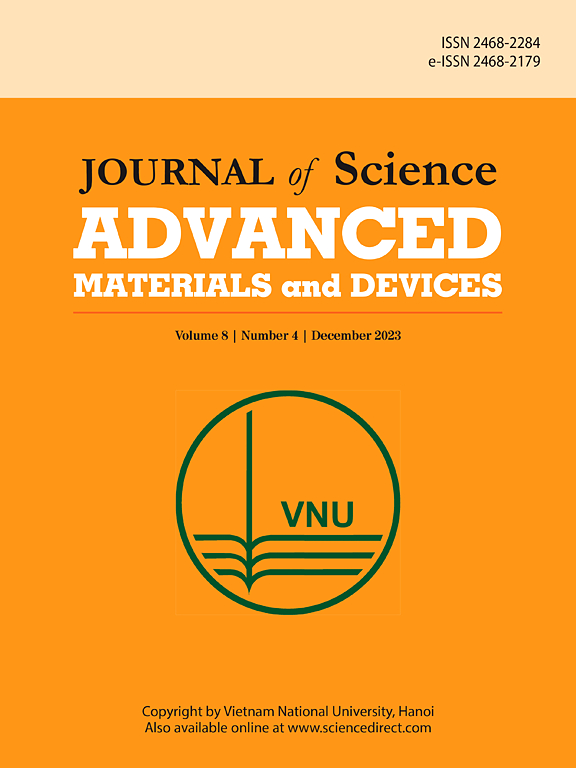Design and numerical simulation of Sb2S3 based p-i-n structured planar solar cell using SCAPS-1D software
IF 6.7
3区 材料科学
Q1 MATERIALS SCIENCE, MULTIDISCIPLINARY
Journal of Science: Advanced Materials and Devices
Pub Date : 2025-03-28
DOI:10.1016/j.jsamd.2025.100885
引用次数: 0
Abstract
Sb2S3 is an emerging layered chalcogenide semiconductor with outstanding properties suitable for solar cells. While Sb2S3 solar cells have been fabricated in various configurations, the highest efficiency achieved to date is 8 %. As a prior step to the fabrication of the Sb2S3-based solar cell here numerical simulation is performed to identify the optimal parameters for achieving maximum efficiency with the proposed layers. In this work, the Sb2S3 solar cell is designed in p-i-n configuration with CuCrO2 and TiO2 as hole and electron transport layers, respectively. The ideal parameters of the individual layers, such as carrier density, thickness, and bandgap to attain maximum efficiency, are determined using SCAPS 1D software. The simulation of band alignment between Sb2S3 and the carrier transport layers predicted a favorable carrier transfer to the respective layers. Additionally, the roles of interfacial defect density, illumination intensity and operating temperature are also analyzed. The basic configuration Au/CuCrO2/Sb2S3/TiO2/Ag proved its potential for a conversion efficiency of up to 26 % together with a significant Voc, Jsc and FF of 1.10 V, 26.82 mA/cm2 and 87.66 %. The optical transparency and chemical stability of the carrier selective layers promote maximum light absorption by the absorber which is highly limited to the conventional organic carrier transport layers.
求助全文
约1分钟内获得全文
求助全文
来源期刊

Journal of Science: Advanced Materials and Devices
Materials Science-Electronic, Optical and Magnetic Materials
CiteScore
11.90
自引率
2.50%
发文量
88
审稿时长
47 days
期刊介绍:
In 1985, the Journal of Science was founded as a platform for publishing national and international research papers across various disciplines, including natural sciences, technology, social sciences, and humanities. Over the years, the journal has experienced remarkable growth in terms of quality, size, and scope. Today, it encompasses a diverse range of publications dedicated to academic research.
Considering the rapid expansion of materials science, we are pleased to introduce the Journal of Science: Advanced Materials and Devices. This new addition to our journal series offers researchers an exciting opportunity to publish their work on all aspects of materials science and technology within the esteemed Journal of Science.
With this development, we aim to revolutionize the way research in materials science is expressed and organized, further strengthening our commitment to promoting outstanding research across various scientific and technological fields.
 求助内容:
求助内容: 应助结果提醒方式:
应助结果提醒方式:


